2014 Super Naked Street Brawl + Video

BMW S1000R vs. Ducati Monster 1200S vs. Kawasaki Z1000 vs. KTM 1290 Super Duke R
In the track version of our Super Streetfighter Smackdown, the KTM 1290 Super Duke R won over the BMW S1000R by the narrowest of margins. Which is all well and good for the small percentage of riders who’ll actually take these bikes to the track. For the greater population, riding these motorcycles on the mean streets of America, the streetable personas of these two and the Ducati Monster 1200S and Kawasaki Z1000 ABS are far more important.
Similar to the track shootout, scoring these four (the MV Agusta was unavailable for street testing, but you can read about it here: 2013 MV Agusta Brutale 1090 RR Review – Quick Ride) was extremely close, with the two finalists separated by only 1.07% or 5.75 points (497.75 vs 492).
Keeping with the same fashion of the first story, each editor will present the pros and cons of an individual bike, beginning with our Chief Wheelie Editor, Kevin Duke.
BMW S1000R
BMW has been on a roll lately, debuting new models that usually end up at the top of their classes. The S1000R continues that hot streak, bringing to the naked sportbike market one of the hottest and most capable streetfighters ever. It’s essentially a riff on the all-conquering S1000RR, and it’s a better streetbike in every possible way.
Ergos are much more suitable for street use, with a handlebar set at a sporting but comfortable reach and a plusher seat with plenty of fore/aft room to vary the riding position if desired. Taller riders, however, wished for more legroom; BMW missed an opportunity to fit adjustable footpegs.
Of all the bikes in this test, the S1000R requires the least amount of time to feel comfortable. Everything works as you’d hope it would, feeling entirely natural and predictable from mile 1.
“The S1000R really impresses with its relative ease of pace,” Ginger Director, Sean Alexander notes. “It feels like nothing so much as a Japanese supersport, which is truly a blessing and a curse.”
The 1000R’s most obvious advantage is its hummingbird-like agility, bending into corners with just a light touch on the bars. It feels many dozens of pounds lighter than the Monster or the Zee.
“When in motion, the S1000R feels much lighter than its actual curb weight,” Content Editor, Tom Roderick opines. “Its nimbleness and agility on tight, twisty roads is without equal among these four fighters.”
No need to worry about the R’s retuned inline-Four engine feeling anemic. Although it is down a claimed 33 hp from the RR’s incredible 193 horses, it belted out 155 ponies to the rear wheel, less than a horse shy of the KTM’s dominating Twin that enjoys a 300cc advantage. For those keeping count, that’s more power than a Yamaha R1.
Redesigned cylinder head ducts and new cam profiles give the 1000R a bigger midrange punch than the RR, and a rev ceiling clipped by 2000 rpm allowed the use of steel valves rather than lightweight titanium poppets. But make no mistake; this is a seriously powerful motor that has more steam than almost anything under a liter of displacement.
Other changes from RR to R include: A rake stretched by 0.8 degree to 24.6 degrees; an additional 5mm of trail to 98.5mm; and a reworked swingarm that stretches wheelbase nearly an inch to 56.7 inches. It also boasts a slightly larger pillion pad than the RR, but it’s too thinly padded for anything resembling comfort.
All these things are true for the base model 1000R, which retails at $13,150 if you can find one. It includes two ride modes (Rain, Road) and ASC, BMW’s lower-end traction-control system that doesn’t use a lean-angle sensor. For an extra $845, the so-called Standard package is a nice deal, as it includes up-spec traction control (DTC), the addition of Dynamic and Dynamic Pro riding modes, a quickshifter and cruise control.
But it’s the top-line Premium package ($14,950), like our test unit, that’s most desirable. it includes all the stuff listed above and adds heated grips, a chin spoiler and Dynamic Damping Control, a semi-active suspension system. DDC adapts automatically to speeds and riding conditions, and is fine-tunable at the touch of a button – it’s like magic for a suspension.
In its Dynamic mode, the damping firms up over the Road setting, while Dynamic Pro offers tauter damping, disables the rear ABS and allows wheelies while still retaining traction control. These electronic systems might frighten luddites, but they’re all useful and surprisingly easy to navigate.
“Within minutes and without instruction,” observes Roderick, “I was able to adjust the shift light from its 7k-rpm setting to 10,500 rpm – a process on other bikes that requires reading the owners manual.”
The instrument panel offers oodles of info, including the S1000R’s track mode that displays details of the current, best or last lap time. It can even drill down to display the time per lap the brakes were applied, the throttle position in percentage per lap and the number of gear shifts per lap.
The 1000R is so well-engineered that it was surprising to find flaws, but they are there. Maneuvers in tight spaces are impeded by what is easily the most limited steering sweep of this group. Initial bite from the front brakes can be abrupt if not given extra care. Also, the engine’s lack of a counterbalancer allows more vibrations to make their way to a rider. They’re tolerable below 75 mph but become burdensome at higher speeds, a chore that’s only somewhat ameliorated by BMW’s cruise control.
The final area that received scrutiny by some editors is the S1000R’s lack of a distinctive character, mostly due to the ubiquitousness of its inline-Four powerplant.
“This BMW packs a ton of value into a technologically advanced and thoroughly engineered package that gets the job done with a minimum of drama,” Alexander says. “Perhaps too little drama, if you ask me.”
The S1000R is a scintillating sports roadster, there is no doubt. And the word value can actually apply to this Beemer – the base model is only $1,150 more than the Z1000, and the loaded version is $2k cheaper than the Super Duke R despite having active suspension, cruise control and a quickshifter, items not available on the KTM.
We love it. And we bet BMW wishes its Austrian rivals hadn’t introduced the SDR.
–Kevin Duke
Ducati Monster 1200S
Everything the Ducati Monster 1200S gave up in terms of competitive track performance it gained back in the street-legal environment for which it was created. This should come as no surprise. The S1000R is derived from its all-conquering S1000RR, and KTM extolled the Super Duke R’s track pedigree by hosting its press launch at the Ascari Circuit in Spain. The Monster 1200S and Kawasaki Z1000 ABS, on the other hand, don’t claim the same racetrack DNA instilled in BMW and KTM. So, chastising the Duc and Kawi for not being as track-proficient as the other two is akin to berating something with gills for its inability to breath on dry land.
To my eyes the new Monster is hands-down the sexiest two-wheeler of this quartet, and sex appeal when profiling on the street is important. To score the Ducati last in both the Cool Factor and Appearance categories of the ScoreCard, Neckerchief Editor, John Burns, must have been wearing his wine bottle goggles. Everyone has a bad side, and while the left profile of the Monster is certainly lacking, from every other angle the bike is simply mouth-watering.
“The Monster’s fat python exhaust headers and stout red trellis frame are very appealing, all those cooling and vent hoses … not so much,” said Alexander in the track portion of this two-part test.
Complaints of the bike’s limited cornering clearance and combination of awkwardly uncomfortable footpegs/passenger peg brackets faded from memory when operating the Duc at the lower aggression levels used on the street.
“Compared to the others, a rider sits further inside the cockpit on the Monster,” says Duke. “The ergonomic compromises of footroom noted on the racetrack were mostly forgotten on the street, and dragging pegs were a non-issue.”
The strength of the Ducati package, though, is its torquier-than-thou liquid-cooled, 1198cc Testastretta 11° V-Twin engine. With enough real-world, usable mid-range power to outgun the others in top gear roll-on contests and blast out of tight corners with unmatched ferocity, the Monster lives up to its namesake.
“The Diavel-derived 90-degree V-Twin in the new Monster 1200S continues to impress on the street,” says Alexander. “I was surfing its wave of midrange torque on the road because top-end performance remains a moot point 98% of the time.”
Announcing the Ducati’s arrival is a thunderous baritone emanating from its twin-stacked mufflers. Whether bouncing off skyscrapers or canyon walls, the Monster heralds its arrival with auditory authority.
The Monster also deserves high-praise for its attention to passenger accommodations, an attribute the other OEMs seem to have forgotten about on their models. “If you ride around with a passenger a lot, it’s almost the only choice here,” says Burns. “Shame on the others for barely paying any attention to passenger seating.”
At 32.5 inches the Monster has more distance between bar-ends compared to BMW’s 31.5, Kawi’s 31.1 and KTM’s 31 inches. While this provides extra leverage for bending the bike with the longest wheelbase through tight arcs, Duke said the bend felt awkward to him.
The Monster is the only bike here with an adjustable seat going from its 31.9-inch standard seat height to 30.9-inches by way of four easily removable plastic caps. It’s also the only bike with grab rails for a passenger and a seat cowl.
So, if you’re looking for an awesome GT streetfighter, the Monster 1200S is in a class by itself. However, when thrown in a class of other streetfighters, such as the Super Duke R and S1000R, the Monster isn’t going to be everyone’s first choice.
– Tom Roderick
Kawasaki Z1000 ABS
I could be wrong (again), but I bet maybe 5% of the people who buy one of these is gonna ride it as hard as we just did. If you have enough track experience to grind its undercarriage, you probably already have a track bike, and if you ride it fast enough up and down Angeles Crest Highway to start finding its limits, you probably already have a “real” sportbike.
For the sort of everyday real-world urban assault/commuter use most people are going to use these bikes for – especially if you live someplace where curvy roads are few and far between – you can probably find just as much happiness with the Kawasaki as with any of them. It’s a rigid, tightly bolted-together taut little package in yoga pants – even a little too taut for some: “It’s weird to have the seat of an Italian bike – the Monster’s – be vastly more comfortable than that of a Japanese all-rounder like the Kawi,” says Duke. Some of questionable taste even like the way the Z looks, which is not bad once you get past the Salvador Dali limp headlight.
The new Showa Big Piston Fork up front really steps up the Z’s game, and the rear keeps up its end too – but the rear feels harsh over bumps compared to the other three bikes here (which are all really good), and that same tautness doesn’t allow the rear wheel to track as well as the others through bumps, cranked over and with the power on hauling the mail on a fast backroad: Those bumps feed to the front, where they don’t exactly upset the steering but due to the lack of steering damper, give the Z a less confident feel than the others.
Purists might like that there’s no traction control, and the Kawasaki’s relatively low output feels like it doesn’t need it on dry grippy pavement, anyway. Meanwhile, the BMW and KTM are using every bit of their horsepower and chassis advantages to clear off into the distance, laser-beaming confidently from apex to apex on an invisible wave of Teutonic electrons, “Ride of the Valkyries” booming out their exhaust pipes.
Trying to keep up means you’ll have to shift more, and you need big throttle openings to keep the 1043cc inline-Four fed, followed by more brakes, which begin to feel grabby when your inputs start to get hurried – then the gearbox starts feeling hard to downshift. In sport use, compared to the others, the Z needs to do more with less, and eventually begins to feel harried and porpoisy. The others are simply easier to ride fast. Riding medium or mellow, the Z’s fine.
Speaking of which, though its counterbalancer keeps the engine smooth at cruising speed, the Z is geared ridiculously low – probably to keep people from getting a death grip on the bars at 150 mph and starting a nasty oscillation. Raising the gearing a bit would make it an even better urban bike/commuter and would make it way easier to exploit its big fat torque curve. It already has a great ergonomic layout, ABS brakes, and if history is any indicator, greater long-term reliability and fewer things to go wrong, than anything else in this contest.
At $11,999, the Z is also the cheapest bike here. But as T. Roderick points out, a mere $1,151 more might put you in the base-model S1000R (if you can find one for MSRP). That’s about 10% more money for about 20% more motorcycle, if high performance is the goal. If you want a Kawasaki to keep up with the BMW and KTM, you’ll need to shop in the ZX-10R department.
–John Burns
KTM 1290 Super Duke R
What is it that makes a truly great motorcycle? Is it funky styling that introduces something uniquely cool to look at? Is it the strongest motor in a given segment? Maybe it is a chassis and suspension that work well, everywhere? Perhaps it is a wide performance envelop and the ergonomics to remain comfortable long enough to explore it? The answer ultimately, in the case of the KTM 1290 Super Duke R ABS is quite simply “All of the above.”
This is a motorcycle that can’t help but encourage its rider to ride it however they may want. A machine that can tour all day in comfort and also be highly entertaining on a 15-minute balls-out blast up the gnarliest canyon road, the Super Duke is kind of like a Kawasaki Versys 650, with equal comfort, even better handling, way-more style, twice the brakes, and three times the motor, all delivered in a package that weighs less than that nimble little Kawasaki 650. It really is that good, and is perhaps only a small windscreen away from true all-around perfection.
Fast? Oh yeah, it’s incredibly fast, as Burns so eloquently put it: “On fast roads, anytime the tach needle gets past 5000 and the motor starts making that moaning noise, the KTM is gaining on whatever’s ahead of it seems like. Its fantastic suspension makes the small chop disappear leaned over or upright.”
But crazy insane outright velocity isn’t the only thing that makes the new 1290 Super Duke R so special. “The SDR has that sit-in, familiar feeling that makes it easy to ride fast as well as being comfortable for anything from commuting to light touring.” Says MO’s resident conspiracy theorist, Tom Roderick, adding, “The SDR’s upright riding position is more reminiscent of an Adventure-Touring bike than it is a Streetfighter.”
Duke chimed-in with: “Rider comfort is exceptional on the SDR; only short riders will complain due to the tall seat.” Burns then piled-on with his own comfort observations: “Man, for 5-foot, 8-inch me this thing just has perfect ergos. It’s so skinny at the footpegs it splays my pelvis less and makes the seat more comfortable, and there’s no rear suspension linkage taking up real estate so you can tuck your heels-in even tighter. As well-controlled as the suspension is, it still seems to offer a bit more plushness in the first bit of travel compared to the other bikes.” That last bit is a set of traits that are no doubt enhanced by its five inches of front- and six inches of rear-wheel travel.
I have to agree with my fellow editors, I spend a day touring SoCal’s inland empire freeways on this Super Duker, pre-shootout, and arrived back at my home feeling fresh as a daisy thanks to the KTM’s smooth ride, tall/cushy seat and generous legroom. Bottom line? This is a remarkably comfortable beast of a motorcycle.
It’s friendly as well: “For a clutch that has to clamp onto almost 100 ft-lb of torque, lever pull is amazingly light,” says Duke. He has a point there, that beast of a BEAST of a motor doesn’t really punish anything except its rear tire. The KTM is also friendly in other ways, like the aforementioned comfort, or its ability to go just as fast as anything else on two wheels without making the rider work hard at all. Well, perhaps a bit of effort is expended when trying to hang on as the thing accelerates – relentlessly – and the wind-blast builds. In traffic, maneuvering around lesser vehicles is simply a piece of cake, and thanks to the commanding view afforded by its upright riding position and long-suspension, the KTM is one of the most comfortable motorcycles on which to lane-split that I’ve encountered in years.
It’s no slouch in the electronics department either, as it offers not only traction control and ABS, but also selectable ride modes to tailor the TC and engine power delivery to one of three settings, Sport, Street, or Rain. Another electronic nicety… heated grips! Top it off with well over 40 mpg in real-world riding, or even 37.9 mpg when flogged relentlessly in the canyons and you get the picture of a motorcycle that truly can deliver the goods on every front except wind protection.
Gripes? Yep, two. First is that previously mentioned lack of wind protection, which is a weakness shared equally by every bike in this test. Second is an annoyance unique to the KTM: Switching off its traction control (and wheelie control) requires the bike to be stopped. And, despite needing a long button press to disable it, the TC would occasionally somehow turn itself back on while riding, and that’s a fairly significant flaw if not confined to our test unit.
Throughout our combined track and street testing, Roderick raved about the BMWs electronic doo-dads and its feature-to-value ratio. He made some good points, theoretically. In the real world, the KTM was the bike for every single rider on the street and once again at the track, Tom included. He is to be commended for trying to retain his impartial analytical professionalism, but one need only step back and observe our collective group fighting for the KTM’s keys, to realize just what an absolute superstar the 2014 KTM 1290 Super Duke R really is.
Value means more than a simple cost/benefit analysis. More to the point: When it comes to motorcycles “benefit” is more than a list of features, because how a bike makes you feel also carries tremendous weight. In this group, the KTM is the winner, by a mile.
–Sean Alexander
2014 Super Naked Street Brawl Scorecard | ||||
|---|---|---|---|---|
| Category | BMW S1000R | Ducati Monster 1200S | Kawasaki Z1000 ABS | KTM 1290 Super Duke R |
| Price | 50.0% | 37.5% | 100% | 17.5% |
| Weight | 100% | 100% | 80.0% | 92.5% |
| Engine | 90.3% | 88.8% | 76.9% | 95.6% |
| Transmission/Clutch | 90% | 83.8% | 73.8% | 91.9% |
| Handling | 97.5% | 79.4% | 70.0% | 94.4% |
| Brakes | 87.5% | 88.8% | 85.0% | 92.5% |
| Suspension | 96.3% | 82.5% | 70.6% | 94.4% |
| Technologies | 99.4% | 86.9% | 66.3% | 89.4% |
| Instruments | 93.8% | 71.9% | 83.1% | 87.5% |
| Ergonomics/Comfort | 85.6% | 74.4% | 82.5% | 98.8% |
| Appearance | 89.4% | 81.9% | 84.4% | 88.1% |
| Cool Factor | 86.3% | 81.2% | 70.0% | 91.3% |
| Grin Factor | 86.3% | 80.0% | 70.0% | 97.5% |
| Overall Score | 91.1% | 83.2% | 78.1% | 92.2% |
Scores are listed as a percentage of editors’ ratings in each category. The Engine category is double-weighted, so the Overall Score is not a total of the displayed percentages but, rather, a percentage of the weighted aggregate raw score. | ||||
Although Duke and Roderick had the BMW ahead on the ScoreCard, Alexander’s and Burns’ scores weren’t as kind to the S1000R, thus pushing the KTM past the Beemer by the narrowest of margins. What it comes down to in the end is the fact that KTM has crafted a streetfighter, that, even with a relative technological handicap, manages to outperform its competition in every way.
Unlike the split decision between the KTM and BMW, the editors were unanimous in their ranking of the Ducati third and the Kawasaki fourth. The Ducati should be a little better for $16k, and honestly, the same can be said for the Kawasaki at $12K.
Next, stay tuned for the ultimate streetfighter title match between the reigning champ Aprilia Tuono V4R APRC ABS, and our new title contender the Super Duke R, along with the S1000R which we’re throwing-in for good measure.
| BMW S1000R | Ducati Monster 1200S | Kawasaki Z1000 ABS | KTM 1290 Super Duke R | |
|---|---|---|---|---|
| MSRP | $14,950 | $15,995 | $11,999 | $16,999 |
| Engine Capacity | 999cc | 1198cc | 1043cc | 1301cc |
| Engine Type | Inline-Four | 90° V-Twin | Inline-Four | 75° V-Twin |
| Bore x Stroke | 80 x 49.7 mm | 106 x 67.9mm | 77.0 x 56.0mm | 108 x 71mm |
| Compression | 12.0:1 | 12.5:1 | 11.8:1 | 13.2:1 |
| Horsepower/Torque | 155.3 hp @ 11,200 rpm / 79.7 ft-lb. @ 9,500 rpm | 130.8 hp @ 8,700 rpm / 84.8 ft-lb. @ 7,400 rpm | 124.0 hp @ 10,400 rpm / 71.6 ft-lb. @ 7,900 rpm | 156.0 hp @ 9,100 rpm / 96.5 ft-lb. @ 8,200 rpm |
| Fuel System | Electronic fuel injection | Electronic fuel injection | Electronic fuel injection | Electronic fuel injection |
| Transmission | Six-Speed | Six-Speed | Six-Speed | Six-Speed |
| Final Drive | Chain | Chain | Chain | Chain |
| Frame | Aluminum composite bridge frame | Tubular steel Trellis frame attached to the cylinder heads | Aluminum Backbone | Tubular space frame made from chrome molybdenum steel, powder-coated |
| Front Suspension | Dynamic damping control semi-active suspension | Ohlins fully adjustable 48mm usd forks | 41 mm inverted SFF-BP fork with stepless compression and rebound damping and spring preload adjustability / 4.7 in. | WP Suspension Up Side Down |
| Rear Suspension | Dynamic damping control semi-active suspension | Progressive linkage with fully adjustable Ohlins monoshock | Horizontal back-link single shock with adjustable preload and stepless rebound damping / 4.8 in. | WP Suspension Monoshock |
| Front Brakes | Dual 320mm floating rotors, fixed radial-mount 4-piston calipers | Dual 330mm semi-floating rotors, radial-mount Brembo evo M50 4-piston Monobloc calipers, radial pump master cylinder and ABS | Dual 310mm petal-type rotors with radial-mount four-piston monobloc calipers and ABS | Dual rotors with Brembo evo M50 4-piston Monobloc calipers and ABS |
| Rear Brakes | Single 220mm rear rotor, single piston floating caliper | 245mm rear rotor, 2-piston floating caliper and ABS | Single 250mm petal-type discs with single-piston caliper and ABS | Single rear rotor with two-piston caliper |
| Front Tire | 120/70 ZR17 | 120/70 ZR17 | 120/70 ZR17 | 120/70 x17 |
| Rear Tire | 190/55 ZR17 | 190/55 ZR17 | 190/50 ZR17 | 190/55 x17 |
| Seat Height | 32.0 in | 30.9 – 31.9 in | 32.1 in | 32.8 in |
| Wheelbase | 56.7 in | 59.5 in | 56.5 in | 58.3 in |
| Rake/Trail | 24.6º/3.9 in | 24.3º/3.7 in | 24.5º/4.0 in | 24.9º/4.21 in |
| Curb Weight | 459 lbs | 461 lbs | 487 lbs | 469 lbs |
| Fuel Capacity / MPG / Est. Range | 4.6 gal36.9 MPG 170 Miles | 4.6 gal39.0 MPG 179 Miles | 4.5 gal36.3 MPG 163 Miles | 4.7 gal37.9 MPG 178 Miles |

Motorcycle.com presents an unrivaled combination of bike reviews and news written by industry experts
More by Motorcycle.com Staff



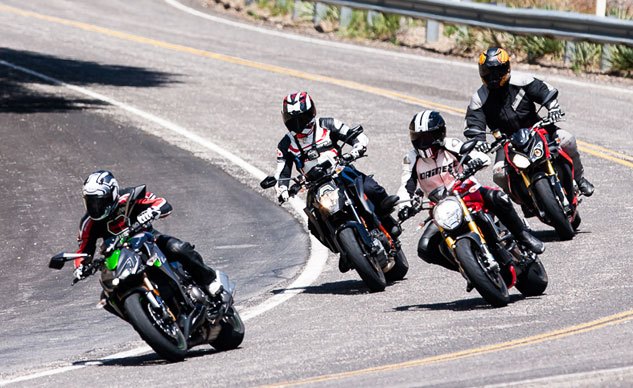
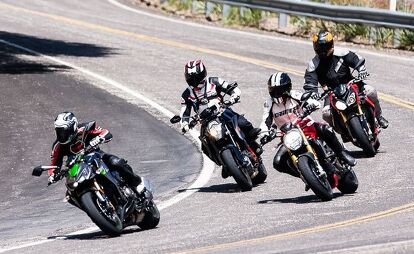












































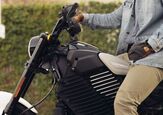
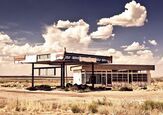
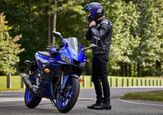
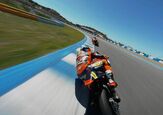
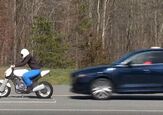
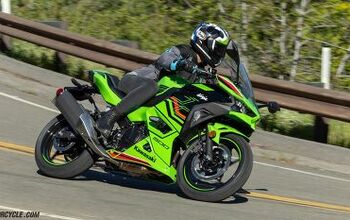
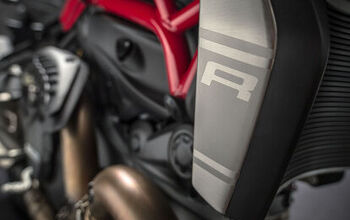

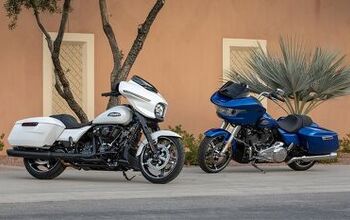
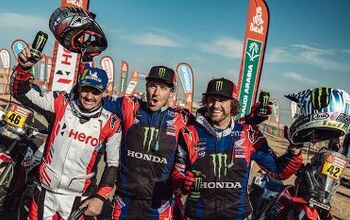

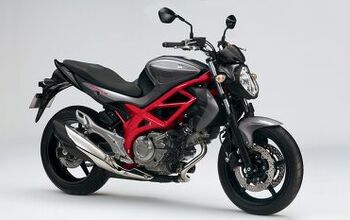

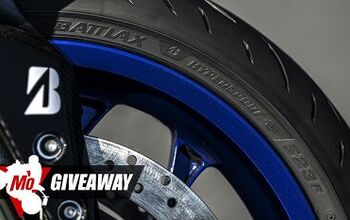
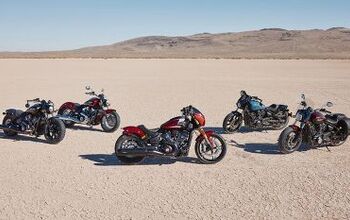
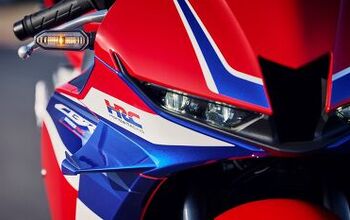
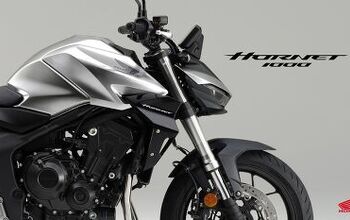

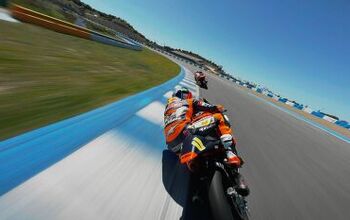
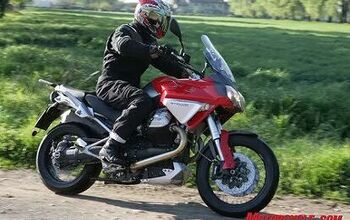
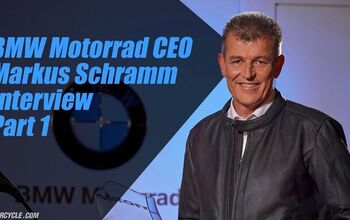
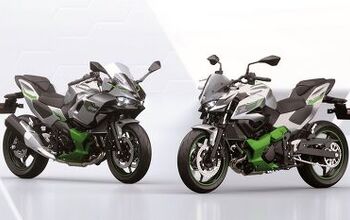
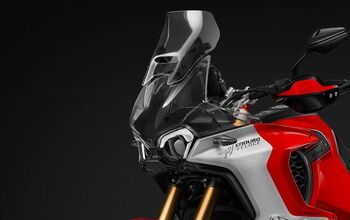
Comments
Join the conversation
I love the S1000R, but that catalytic converter is atrocious looking and it looks like a 3 year old welded that together.
The Kawasaki isn't something you'd feel pride in owning. So the BMW is the cheapest. In my opinion at that price it looks like a bargain for one of the fastest, most refined and above all most exciting bikes on the road.